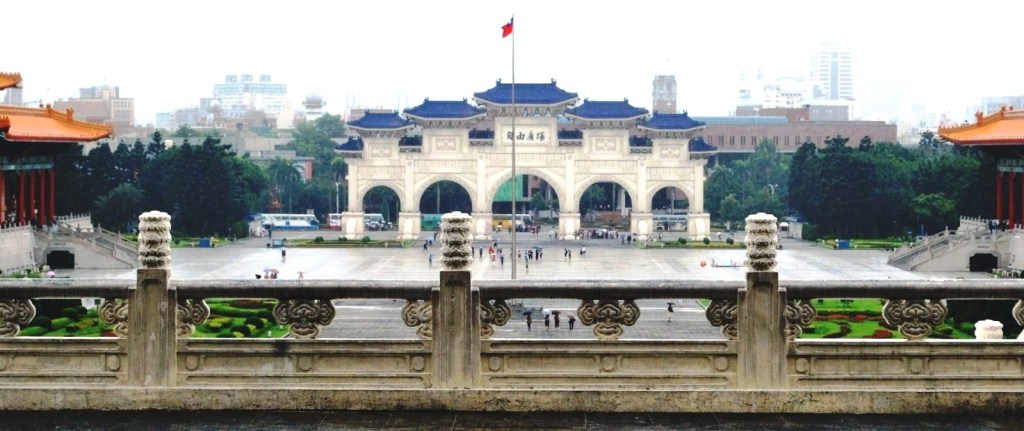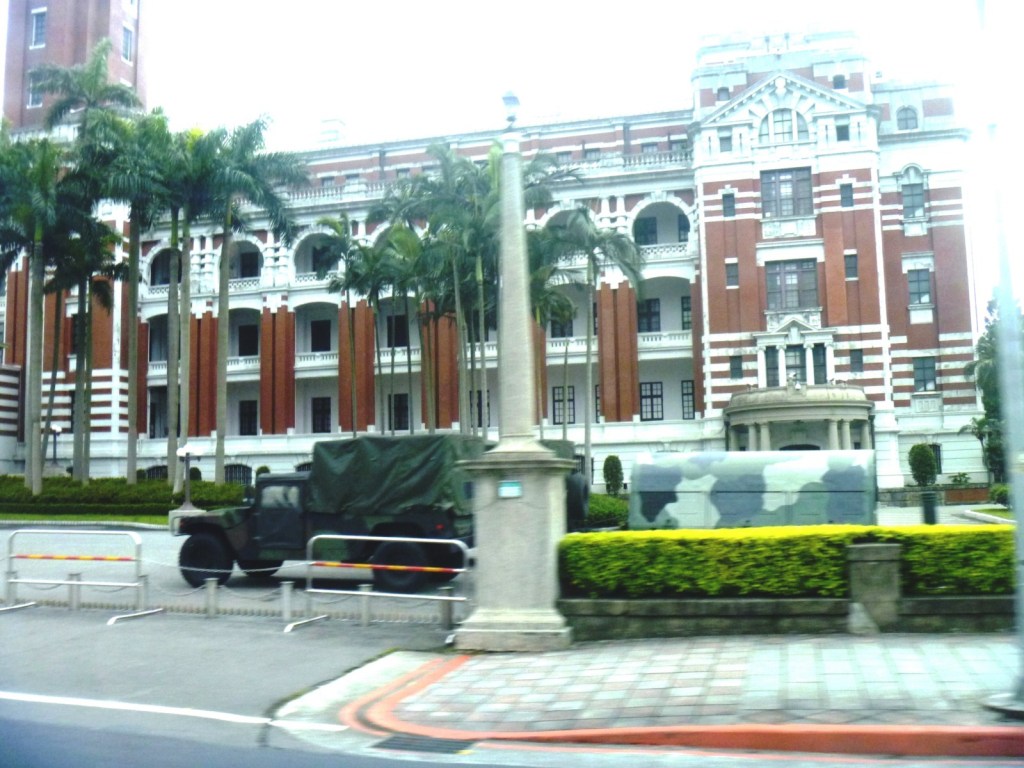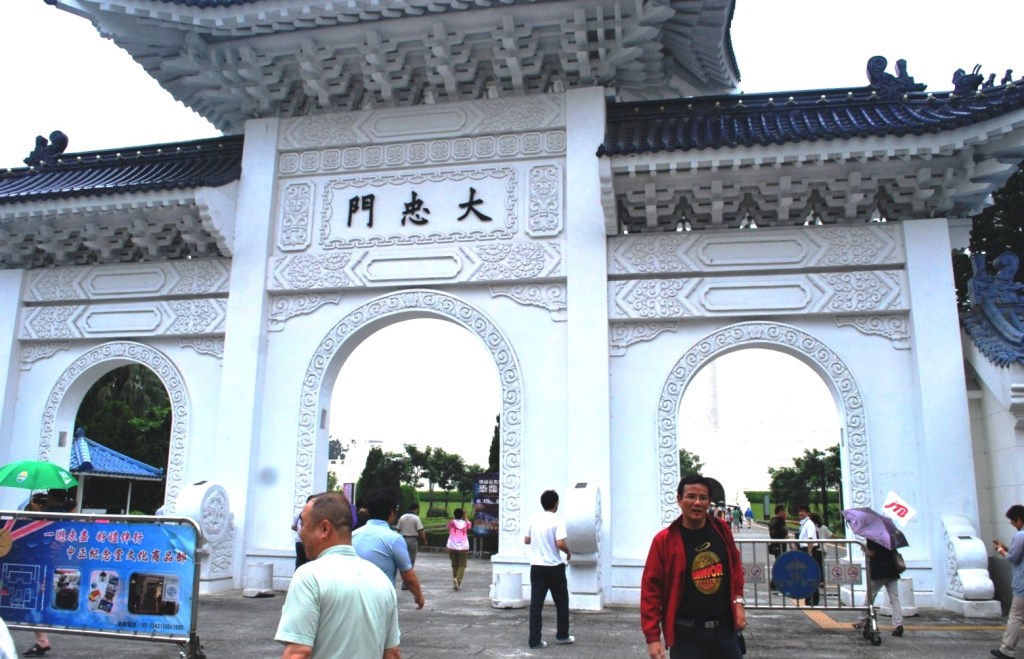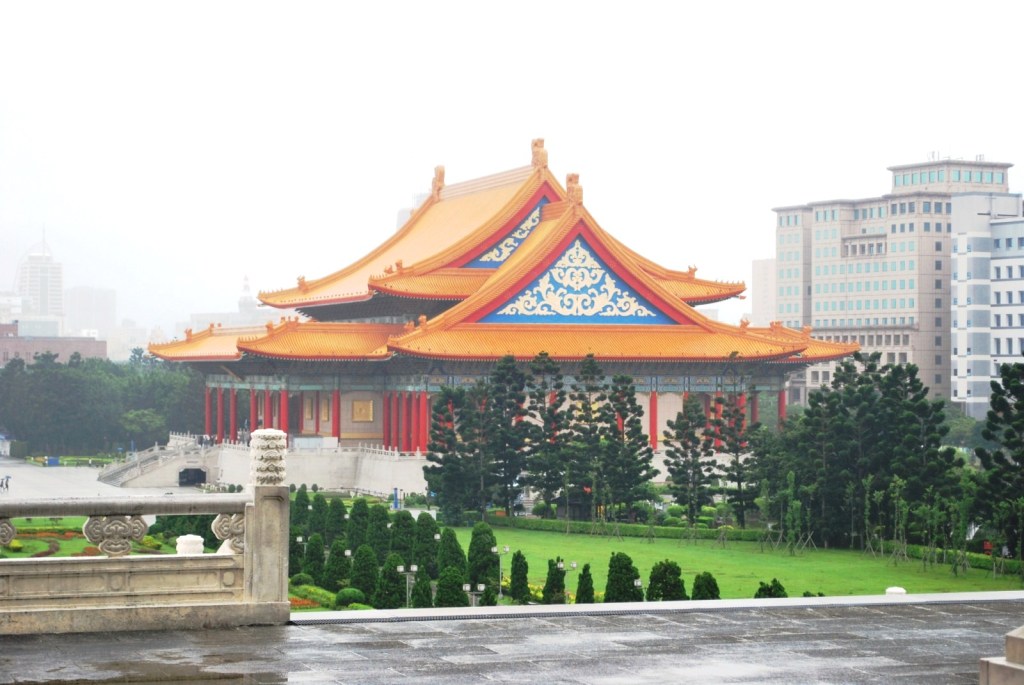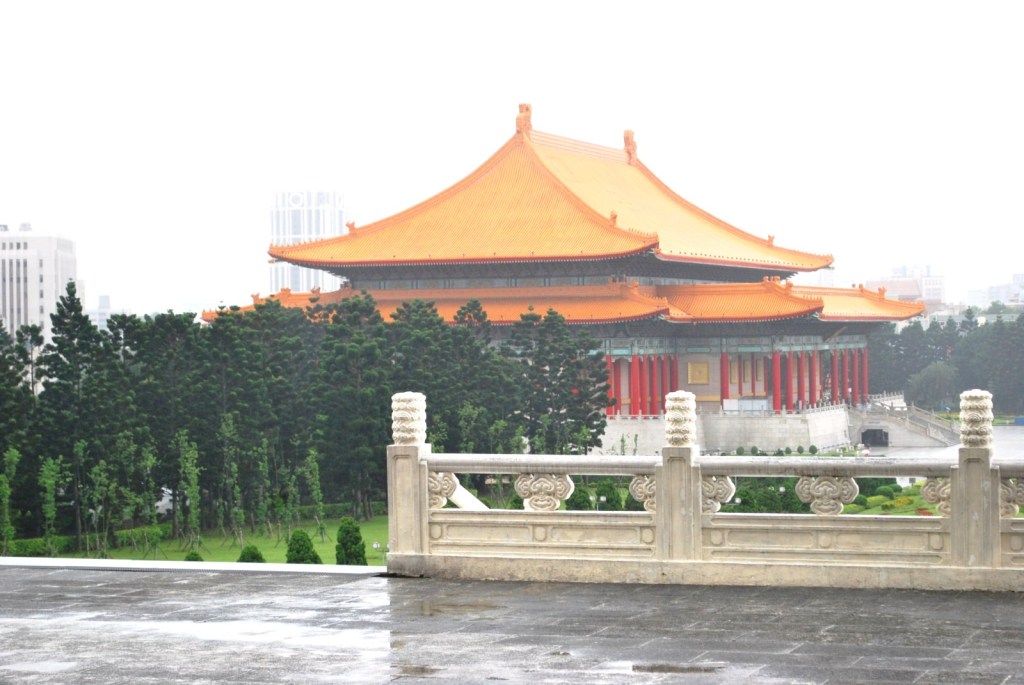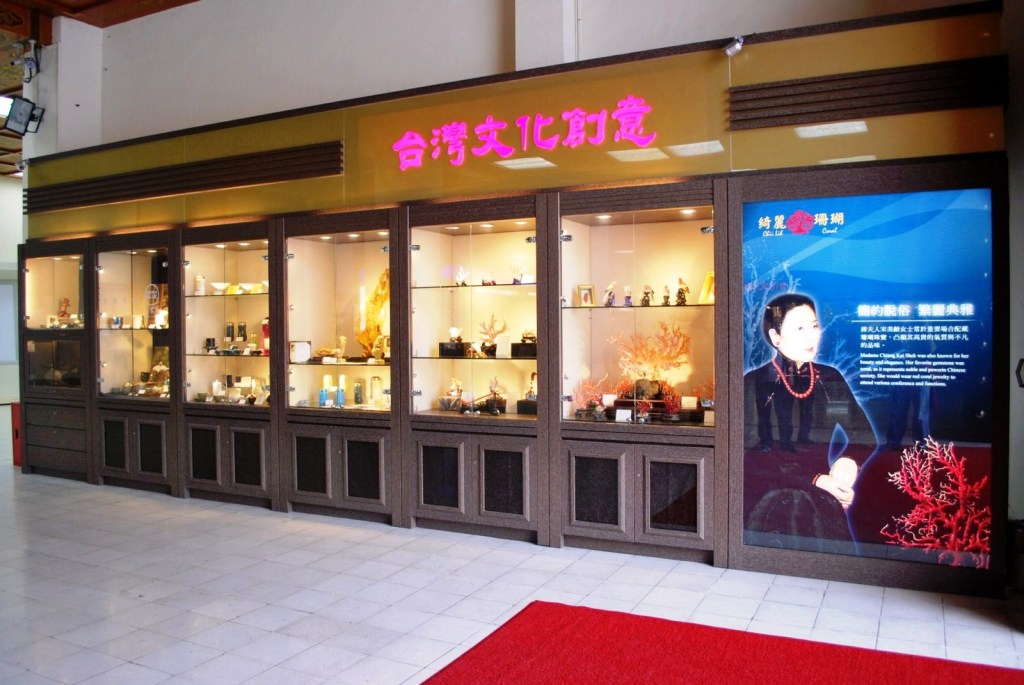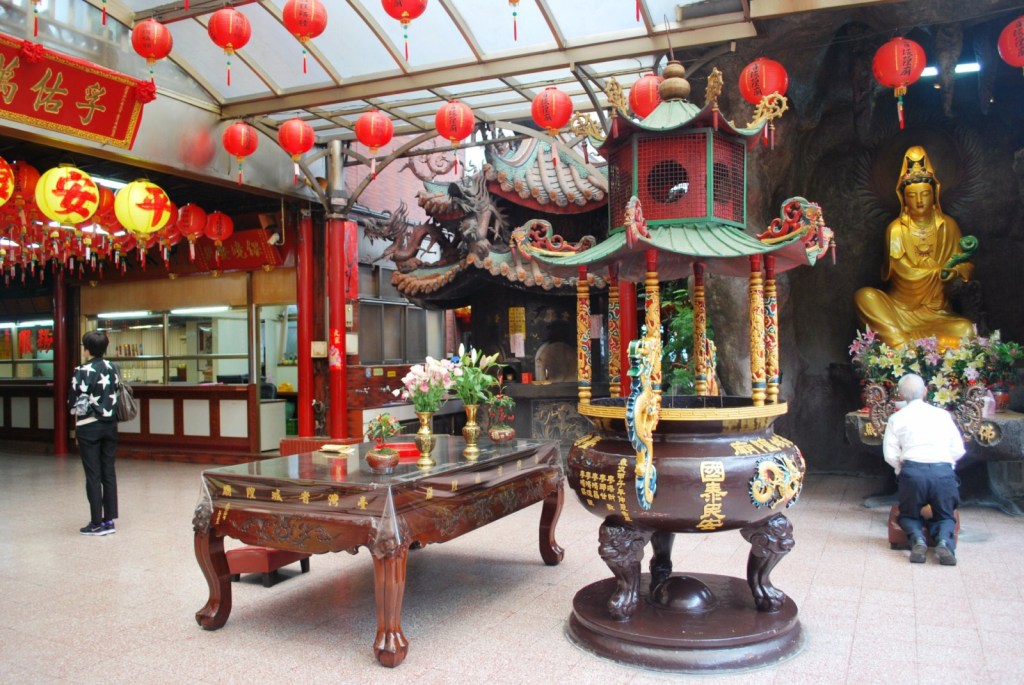After the Changing of the Guard ceremony at the Chiang Kai-shek Memorial and photo ops at Liberty Square, we all returned to the van for our next destination, the 5,00 sq. m. National Revolutionary Martyrs’ Shrine, dedicated to the war dead of Taiwan. Built in 1969 on Chingshan Mountain, overlooking the Keelung River, our visit to the Martyrs Shrine again recalls the architecture of the Hall of Supreme Harmony in Beijing’s Forbidden City as the buildings on the site were skillfully crafted and designed to look like Ming Dynasty palaces.
The structure houses the spirit tablets of about 390,000 persons killed, among other engagements, during the Xinhai Revolution, the Northern Expedition, the Second Sino-Japanese War, the Chinese Civil War and the First and Second Taiwan Strait Crises. It was also the site of the funeral of President Chiang Ching-kuo, the son of Chiang Kai-shek, on January 13, 1988.
Every March 29 (Youth Day, commemorating the Huanghuagang Uprising) and September 3 (Armed Forces Day) of every year, the country’s president leads the heads of the five Yuans (branches of government) to pay their respects to the martyrs by bowing and offering incense.
A changing of the honor guard (the last one at 4:40 PM), from the various branches of the military, similar to the rituals we saw at Chiang Kai-shek Memorial Hall, also takes place at the shrine (and at the Sun Yat-sen Memorial Hall) but it wasn’t going to happen a second time. Soldiers who have the honor of being guards at these shrines must be 1.75-1.95 m. (5′-9″-6′-3″) tall, weigh at least 65 kgs. (143 lbs.), have, at least, a high school education, have no criminal record and have lots of discipline as they have to stand still, even under the scorching sun, for an hour. The guards on duty at this shrine, with their gleaming steel helmets, shiny leather boots and blue uniforms, were from the Air Force, 2 posted at the main shrine and 2 at the main gate along Beian Rd..
Although the Martyrs Shrine is located in Taiwan, most of the soldiers honored served China and were born in Chinese provinces. The main sanctuary was modeled after the Taiho Palace in Beijing. Plaques, paintings and friezes in the arcade surrounding the main sanctuary describe the details of various 20th-century rebellions and battles. A bell tower and drum tower are used during memorial ceremonies. Next to the shrine is the 12-storey, 490-room Grand Hotel, one of the world’s tallest Chinese classical buildings. It was designed by Taipei-based architect Yang Cho-Cheng and completed on October 10, 1973.
National Revolutionary Martyr’s Shrine: 139 Beian Rd., Shilin, Taipei, Taiwan. Tel: (+886-2) 2349 1635 and (+886-2) 2885-4162. Open daily (except Saturdays), 9 AM-5 PM. Admission is free.
How to Get There: take a taxi from Jiantan or Yuanshan MRT stations or take the free shuttle bus from Yuanshan MRT station to the Grand Hotel, then walk 15 mins. east, alons Bei-an Road (ask for directions at The Grand Hotel).
Grand Hotel: No. 1, Section 4, Zhōngshān North Rd., Jhongshan District. Tel:
(+886-2) 2886-8888. Website: www.grand-hotel.org.








